by Justin Mckibben | Jul 31, 2018 | Addiction, Addiction Treatment, Coping Skills, Family, Mental Health, Parenting
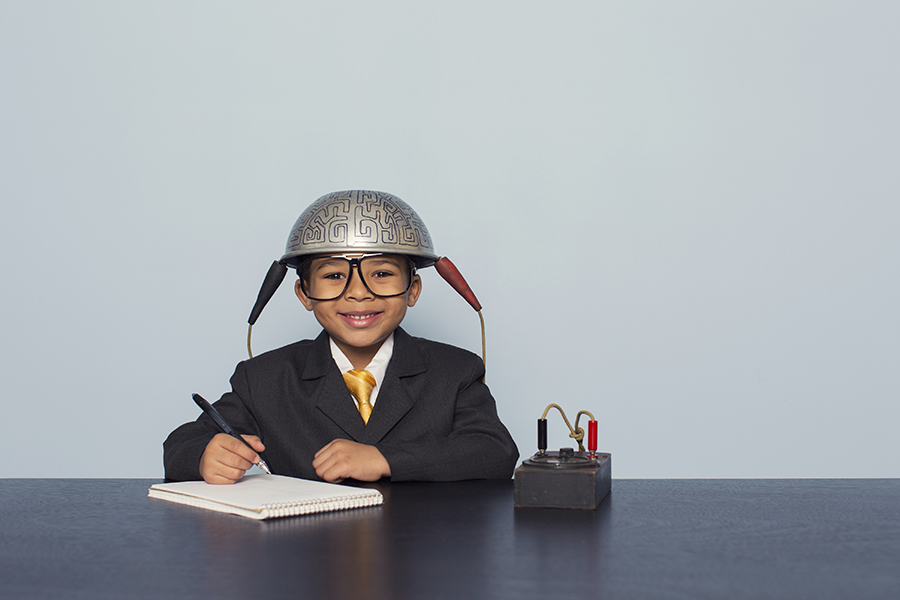
(This content is being used for illustrative purposes only; any person depicted in the content is a model)
One of the most harmful myths about alcoholism that needs to be debunked is the idea that drinking does not affect anyone but the individual. People tend to be self-centered when lost in their cups, and so many believe the only person who has to deal with their drinking problem is them. No one else has to spend the money, or feel the hangover, or suffer the consequences… right?
But we know this isn’t true. The behavior of an alcoholic or a drug addict impacts others, especially the people closest to them. An alcoholics family can experience a great deal of pain and carry plenty of consequences as the result of their loved one’s drinking.
However, none are as vulnerable as the children of alcoholics. Frequently, the impact of parental alcoholism on a child can last the rest of that child’s life. Even as children, they may do their best to conceal the effects at the time, but one way or another it always leaves a mark. Here are just some of the ways that parental alcoholism affects children.
-
Low Self-Worth
One way parental alcoholism affects children is by creating a lot of self-doubt and self-criticism in many children. Often, the children of alcoholics believe their own shortcomings are the cause of disturbances in the home. This can lead them to be extremely critical of themselves. They may believe they are not good enough, and frequently develop low self-worth and low self-esteem.
Even as adults, the children of alcoholics can feel inadequate.
Over time, the tendency to doubt themselves and be so critical can lead to other issues, including depression and anxiety disorders. Parental alcoholism can lead a young child to feel like they are unworthy or responsible for more than is actually under their control.
-
Fear or Abandonment
In most cases of parental alcoholism, the parent is emotionally unavailable or even physically not around. Sometimes a parent will be asked to leave due to their drinking by the other parent. Other times, the parent will get in trouble with the law and may go in and out of institutions. In some cases an alcoholic parent will have to be hospitalized, or even worse, they pass away.
All of these circumstances can lead the child of an alcoholic to develop a deep fear of being abandoned. Losing a parent, even if only periodically, can be devastating for young children.
-
People Pleasing
When a child has developed low self-worth, is extremely critical of themselves and has a fear of being abandoned, it only makes sense that they will constantly seek approval from others. Growing up in a house with parental alcoholism as the norm, a child always trying to make others happier will become a people-pleasing adult.
This can be especially true if a child’s alcoholic parent was mean or abusive when they were drunk. It can intensify the fear of not being enough, or of being abandoned. As an adult, the children of alcoholics can grow up with a fear of confrontation. They may spend their lives avoiding any form of conflict. Furthermore, a child of an alcoholic might even sacrifice their own well-being in order to avoid making others angry.
Sadly, with people pleasing a child will learn to suppress their own emotions, making them an emotionally stunted adult.
-
Overcompensating
Sometimes, the child of an alcoholic is so committed to people pleasing that they become a perfectionist. Parental alcoholism can cause a kid to become incredibly responsible, hoping to gain some control of the world around them. These children of alcoholic parents become overachievers or workaholics.
However, there is no guarantee that they will not try to overcompensate in the opposite direction. An alcoholic’s child may also become very irresponsible members of society. They may adopt a self-destructive lifestyle similar to their parents in order to try and escape the pressures of an alcoholic home. Thus, the cycle continues.
-
Normalizing
If parental alcoholism has played a key role in the household, it is hard for a child to determine what “normal” is. This inability to distinguish the good from the bad makes it much more difficult for children to decide which role models to follow. Not only that, it makes it hard to know the right way to treat other people.
If you grow up in a home where abuse and alcoholism are normal, you are likely to engage in that behavior and seek out relationships like that later on in life. By normalizing the harmful behaviors and the toxic relationships that a child of an alcoholic can be exposed to, they are also building a faulty foundation for future relationships.
-
Difficulty with Relationships
When growing up with parental alcoholism in the home, kids will experience things like:
Sadly, they may accept that these things are all normal. Thus, these children can develop severe trust issues. If you have grown up developing serious trust issues and/or a lack of self-worth, getting close to anyone can seem almost impossible.
In order to be intimate with others, you have to rely on others for emotional attachment, fulfillment, and interdependence. These things can be very hard to reconcile for the child of an alcoholic home. And if you are so critical of yourself, a strong fear of abandonment will definitely be very hard to overcome when trying to build relationships. Pretty much every issue we mentioned before this point makes it extremely difficult for these children to have healthy relationships.
Overcoming Parental Alcoholism
In truth, there are innumerable ways that parental alcoholism could affect a child. Because we are always trying to figure out what things mean as children, we could adopt completely different ideas based on a variety of experiences. Some people are more sensitive to certain kinds of problems, while others may use their bad experiences as motivation to set better standards for themselves. In short, not all children of alcoholics will be affected the same.
However, many of the issues on this list appear consistently in studies of adult children of alcoholics. For years, these are some of the most common characteristics identified in research on the families of alcoholics. Regardless, one thing remains the same- parental alcoholism can significantly influence a child’s development. Time and time again, we can see how the impact of growing up with parental alcoholism can shape an adult.
A large proportion of the people who seek help for substance use disorders like alcoholism or drug addiction have kids. Sadly, a large number of parents do not seek help because they are afraid of being away from their children. Some even worry they may lose their children. Still, every year countless children lose their parents to alcohol and drug use. That is why it is so important that parents and caregivers receive comprehensive and compassionate support in holistic addiction treatment.
If you or a loved one is looking for treatment, make sure the program you choose has ways for the family to be involved in the recovery process. Not only is it good for helping people understand what their families go through, but they also teach families about what the suffering individual goes through.
Treatment for alcoholism or addiction is not about taking families apart, but about bringing them together.
Palm Healthcare Company believes in uniting loved ones through the practice of healing mind, body and spirit. Our holistic addiction treatment program gives each individual an opportunity to create a personalized recovery plan that helps them to overcome their addiction and get back to what matters most. If you or someone you love is struggling, please call toll-free now.
CALL NOW 1-888-922-5398
by Justin Mckibben | Jun 11, 2018 | Anthony Bourdain, Celebrity, Death, Depression, Dual Diagnosis, Heroin, Mental Health, Mood Disorders, News, Suicide

Anthony Michael Bourdain, born June 25, 1956, was a man with a rich and vibrant legacy. He took us on exotic adventures to explore the world and tried to expand the view of the audience on culinary arts and culture. He was much more to so many than a celebrity chef.
Anthony Bourdain was an author, travel documentarian, and television personality. He used programs like A Cooks Tour and No Reservations to travel across the globe, focusing on the international culture, cuisine, and the human condition. He has sat down for humble lunches with President Obama, and his explosive personality has even been featured in cartoons like The Simpsons and popular FX series Archer. Bourdain has taken us to some of the most secluded corners of faraway places to chat with the locals and enjoy a simple dessert. Anthony Bourdain was widely regarded as one of the most influential chefs in the world.
On June 8th, 2018 the world was shocked to hear that Anthony Bourdain had died at 61 years old. Even more heartbreaking was to learn his death was a suicide. Over the last several days, his passing has sparked a continuous stream of dialog about mental health and the need for treatment resources. Over the years the famous traveling chef fought against drugs like heroin, as well as depression. As we remember who Anthony Bourdain was, and as we call for letting go of stigma and pushing forward with helping those in need, it is important to look at the whole story.
Kitchen Confidential
Anthony Bourdain first fought his way up the kitchen ladder in New York to become a long-time chef at Brasserie Les Hallas. Around this time, he wrote his breakthrough memoirs titled Kitchen Confidential: Adventures in the Culinary Underbelly, which took him beyond the cutting boards to carving his way through the literary map.
Part of this first memoir describes the long journey that brought him to become a chef, and a notable element of his story is extreme excursions into drugs, strung out over years. In the book Kitchen Confidential he wrote about his experiences back in 1981 working at a restaurant:
“We were high all the time, sneaking off to the walk-in refrigerator at every opportunity to ‘conceptualize.’ Hardly a decision was made without drugs. Cannabis, methaqualone, cocaine, LSD, psilocybin mushrooms soaked in honey and used to sweeten tea, secobarbital, tuinal, amphetamine, codeine and, increasingly, heroin, which we’d send a Spanish-speaking busboy over to Alphabet City to get.”
Later, Bourdain became more open about discussing his drug use. He’d even said some of these problems should have killed him in his 20s. In 2014, he did an episode of his show Parts Unknown that highlighted the ongoing opioid epidemic in Massachusetts. During the episode he says,
“Somebody who wakes up in the morning and their first order of business is (to) get heroin — I know what that’s like,”
Parts Unknown went on to be honored with five Emmy awards.
Eventually, Anthony Bourdain found himself kicking heroin in the 80s in drug rehab. When talking about finally getting clean he said,
“And we’re the lucky ones. We made it out alive. There are a lot of guys that didn’t get that far. But you know, I also don’t have that many regrets either.”
However, he admits to still worked long hours in New York kitchens interspersed with binges that consisted of cocaine and alcohol. Following rehab that Bourdain had cleaned up his act, although he continued drinking alcohol. He later wrote,
“Most people who kick heroin and cocaine have to give up on everything. Maybe because my experiences were so awful in the end, I’ve never been tempted to relapse,”
On June 8, 2018, Bourdain was found dead of an apparent suicide by hanging in his room at the Le Chambard hotel in Kaysersberg, France. At the time he had been traveling with friend Éric Ripert. Ripert reported that he became worried when Bourdain missed dinner and breakfast. According to the public prosecutor Christian de Rocquigny du Fayel, Bourdain’s body showed no signs of violence. At this point there has been no official word on toxicology tests to determine whether drugs or medications were involved in his tragic death.
Legacy
It is hard to put into words the life and legacy of a man as dynamic as Anthony Bourdain. He wasn’t just a face on TV, he was a voice trying to tell us to embrace more of the delicious variety in life. It is easier to just look at some of his many accomplishments. Bourdain wrote multiple bestselling nonfiction books over the years, including:
- Kitchen Confidential: Adventures in the Culinary Underbelly
- Medium Raw: A Bloody Valentine to the World of Food and the People Who Cook
- A Cook’s Tour: In Search of the Perfect Meal
- The Nasty Bits
His articles and essays appeared in many publications, including:
- The New Yorker
- The New York Times
- The Times
- Los Angeles Times
- The Observer
- Gourmet
- Maxim
- Esquire
He even co-wrote an original graphic novel titled Get Jiro! For DC Comics/Vertigo.
Between 2002-2018 he hosted a number of shows, including:
- A Cook’s Tour
- No Reservations
- The Layover
- Parts Unknown
He worked on various other television shows, doing everything from judging to producing.
With the sudden news of Bourdain’s death, people from all across the world have paid homage to the man who did so much to try and share the beauty of diversity with us all. In the days following Bourdain’s death fans paid tribute to him outside his now-closed former place of employment, Brasserie Les Halles on New York City’s Park Avenue.
Fellow celebrity chefs and other public figures expressed sentiments of condolence, including Gordon Ramsay and Andrew Zimmern.
Beyond his amazing adventures of cooking in different countries, Bourdain also believed in making a difference for those less fortunate. He championed industrious immigrants from places like Mexico, Ecuador, and other countries in Central and South America.
He became a big advocate in the fight against sexual harassment in the restaurant industry in 2017, calling out other celebrity chefs and people in Hollywood.
Depression and Suicide
Anthony Bourdain had also been open about his struggles with depression. In 2016 he did an episode of Parts Unknown where he traveled to Argentina for psychotherapy. At one point he tells the camera,
“I will find myself in an airport, for instance, and I’ll order an airport hamburger. It’s an insignificant thing, it’s a small thing, it’s a hamburger, but it’s not a good one. Suddenly I look at the hamburger and I find myself in a spiral of depression that can last for days.”
While the passion he had for his work is quite obvious, traveling around 250 days of the year can take a toll. More than once he described his life as lonely. During an interview with People magazine, he said he was living the dream, but admitted that it did come at a cost. That cost may have had something to do with the ups and downs of marriage and divorce he experienced over the years.
Only a few months ago, when discussing his 11-year-old daughter Ariane, Bourdain had said he felt he had to “at least try to live” for her. Although he explained he also felt he did have things to live for. Sadly, it seems that over time, the iconic chef started losing his battle with the feelings he wrestled with on the road.
Anthony Bourdain’s death is another tragic loss in a trend we have seen a spike over the years, including among celebrities. Only three days before Bourdain’s own death, fashion designer Kate Spade took her own life. Suicide is a growing problem in the United States. According to a survey published by the US Centers for Disease Control and Prevention:
- Suicide rates increased by 25% across the country over nearly two decades ending in 2016.
- 25 states have experienced a rise in suicides by more than 30%
While Anthony Bourdain may have been clean for decades, there was still pain there. While overcoming drugs may have been a huge victory in his inspiring legacy, other fights can still wear us down.
There is Help
As we remember the incredible impact that Anthony Bourdain had as an adventurer and advocate, we emphasize the importance of supporting those who need it the most. Sadly, we don’t always know when people need help. But we should always work to make sure people know that there is help, no matter what they are struggling with.
“As you move through this life and this world you change things slightly, you leave marks behind, however small. And in return, life — and travel — leaves marks on you. Most of the time, those marks — on your body or on your heart — are beautiful. Often, though, they hurt.”
–Anthony Bourdain
June 25, 1956 – June 8, 2018
Mental health is an important part of recovery for people who struggle with drugs or alcohol. Fighting depression and suicide prevention means supporting well-being and fighting for mental health support. For those struggling, treatment for mental health disorders and addiction is not always the easiest thing to seek out, but as we as a nation continue to evolve the conversation and raise awareness more people are finding out about the amazing pathways to a life in recovery that are out there. We urge you to seek yours. If you or someone you love is struggling with substance abuse, please call toll-free now. You are not alone.
CALL NOW 1-888-922-5398
by Justin Mckibben | Apr 24, 2018 | Addiction, Ambien, Celebrity, Drug Abuse, Methadone, Prescription Drugs, Recovery, Valium, Vicodin
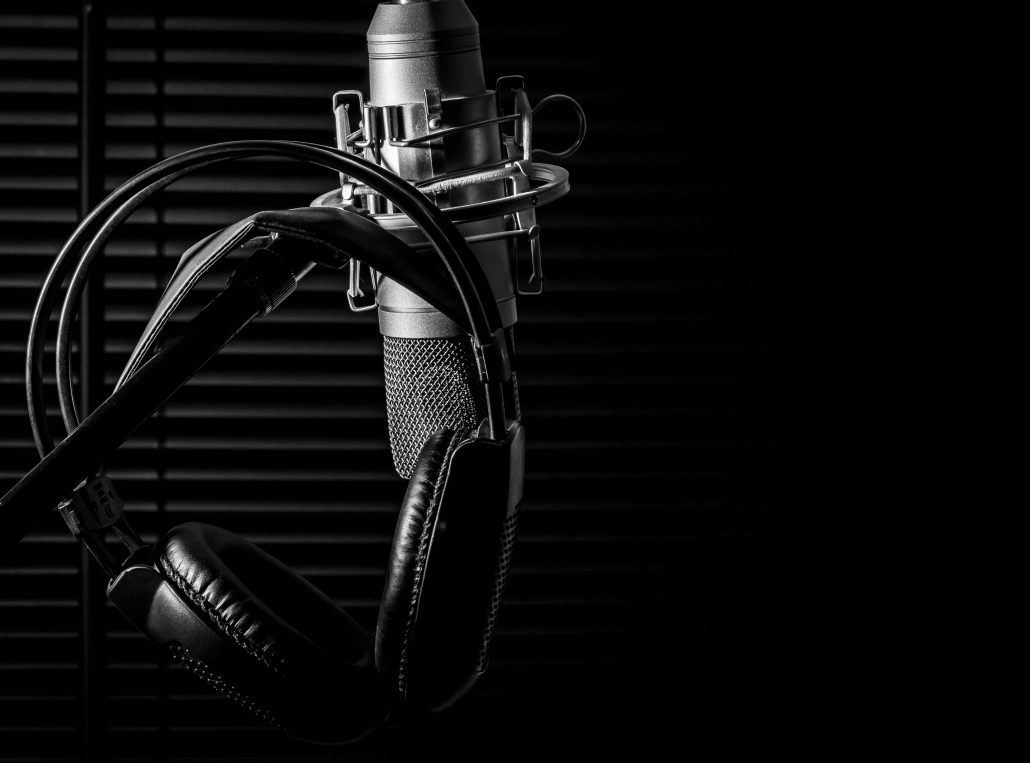
Eminem; Marshall Bruce Mathers III; The Real Slim Shady, is not just an icon in rap who had an unfathomable impact on hip-hop culture. He is also a man who has endured a lifetime of public controversy, private conflict, personal loss and emotional pain. Not only does this make his music career that much more powerful, but it makes his journey through addiction and recovery that much more gripping. With Eminem celebrating 10 years of sobriety this month, we take a quick look at the story of sober Slim Shady.
Eminem Celebrating Sobriety
A few days ago, between his headlining sets at this year’s Coachella, 45-year-old Marshall Mathers took to social media to share a message with his fans. On Instagram Slim Shady posted a photo of his ten-year medallion on Saturday, April 21. The circle, marked with an ‘X’ for the Roman numeral ten, is a token he received to commemorate a decade of continuous sobriety. To caption the image, he wrote:
“Celebrated my 10 years yesterday”
In just 2 days’ time, the image had already garnered over 1.7 million likes and over 33,000 comments. He wasn’t the only one utilizing his social status to share that powerful moment. Fellow rap artist and friend in sobriety Royce Da 5’9” also took to Twitter to give the real Slim Shady a shout out for his recovery milestone, writing:
“Happy sobriety birthday to my mentor @Eminem… Keep fighting the good fight homie… I love you for life”
Eminem has also shared moments of his journey through recovery with other famous sober peers, including Sir Elton John. The post prompted many fans on social media to congratulate Mathers on his anniversary. Others shared how he had helped inspire many others in recovery.
The last ten years have not been easy for Slim Shady, but it seems they have been worth it.
A Quick Look at a Legend
Long before Eminem got sober, he was a household name and best selling artist. Over his whole career, he has had a truly incredible list of accomplishments, including:
- 10 number-one albums on the Billboard 200
- Five number-one singles on the Billboard Hot 100
- 4 million albums sold in the US
- 220 million records globally
- He is among the world’s best-selling artists of all time
- He is the only artist to have eight albums consecutively debut at number one on the Billboard 200
- Winner of 15 Grammy Awards, including Best Rap Album
All of this, not to mention successful clothing lines, the creation of his label Shady Records which helped launch artists like 50 Cent and Yelawolf, and his own Sirius XM Radio channel, Shade 45. He gave us such gifts as D12 and Slaughterhouse, while also inspiring countless other artists.
Eminem isn’t only known for his music, but also for the controversy surrounding him. Whether it was the ugly battles with his mother, ex-wife, or the legal trouble he was conflicted with publically, it all fueled an image of a man who lived in a courtroom fighting painful scandals. He used the pain in his creative process, and the world was given a lot of angry, violent, and even poetic moments.
The Academy Award-winning film 8 Mile, which he starred in, made him the first rap artist to ever win the award for Best Original Song with “Lose Yourself”. Followed by various other film and entertainment ventures.
Oh, and don’t forget the Marshall Mathers Foundation, which aids disadvantaged youth.
The list just goes on and on. There is not enough time here to cover the truly immeasurable impact Eminem has had on not just hip-hop culture, but on the overall culture in America.
Getting to 10 Years
Slim Shady has always been pretty public about his struggles with addiction to prescription drugs. It is laced in his image over the years and is a prominent subject of his music. Back in 2002, a fellow artist said he had been trying to straighten out, but while working on 8 Mile he was introduced to Ambien and this prescription took him deeper down the path. When talking about working on his album Encore, Slim Shady once said he would “just go into the studio and goof off [with] a pocketful of pills”.
In 2007, Eminem suffered from an accidental methadone overdose after his addiction had spiraled out of control. At one point he revealed that he was taking up to 60 Valium and 30 Vicodin pills a day. After adding Ambien to the mix, he made his way to methadone by the end of his substance abuse. In 2011 when interviewed about the overdose, he stated:
“The doctors told me I’d done the equivalent of four bags of heroin… They said I was about two hours from dying.”
In a 2011 New York Times interview Slim Shady said,
“I used to get pills wherever I could. I was just taking anything that anybody was giving to me.”
Following that near-death experience, the Detroit rap legend chose to attend an addiction treatment program in Michigan. However, he ended up relapsing short of a month out of the hospital.
He reported that his star status made rehab difficult for him to focus on himself. Instead, he chose to detox at a hospital and dove into counseling and therapy. He credits his children, including his biological daughter Hailie, and two adopted daughters Lainey and Whitney. He also gives credit to exercise, saying that running helped him find a healthier high that helped him sleep.
When looking at his story, it is absolutely remarkable the impact that Slim Shady had had on the world of hip-hop or just music in general. He has been described by many as one of the greatest artists of all time, with billions of fans all over the globe. To hear about the life he lived; through poverty, depression, desperation, and addiction, to be a living legend only speaks to the inspiration in his experience, strength and hope. We celebrate the path Eminem walks and the work he has done over the years to make it this far.
Thank you for sharing, Slim Shady.
It can be a real inspiration to see some of the most successful people are recovering alcoholics and addicts. It reminds us that we all can suffer the same way and that we all have the same chance to build a better future. The more heroes we have every day that step up and share their message of hope, the more hope we may have that people seek the help they desperately need. If you or someone you love is struggling with substance abuse or addiction, please call toll-free now.
CALL NOW 1-888-922-5398
by Justin Mckibben | Apr 18, 2018 | Addiction, Anti-Social Personality Disorder, Anxiety Disorder, Depression, Dual Diagnosis, Mental Health, Mood Disorders, Post-traumatic Stress Disorder, Schizophrenia
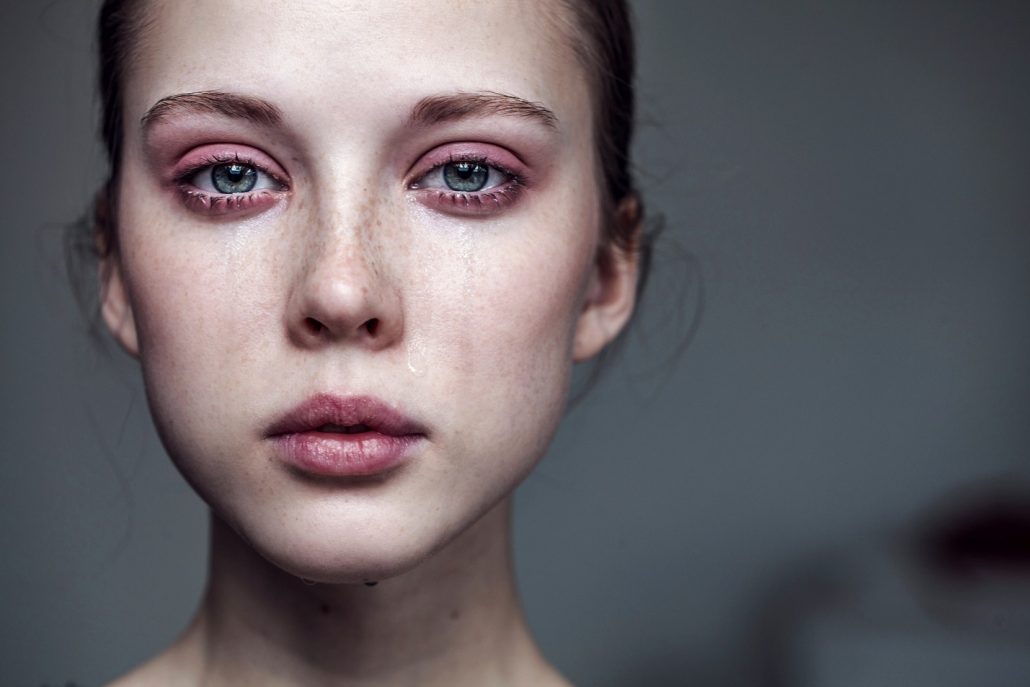
(This content is being used for illustrative purposes only; any person depicted in the content is a model)
It is not so far-fetched to be told that someone whose life is consumed with drug or alcohol dependency can find themselves facing the emotional and mental fallout. When dealing with mental health issues, it is not rare for people to also struggle with substance use disorder. Co-occurring conditions such as these tend to feed off of each other, or even help create one another.
It is almost like when someone has high blood pressure, we are not surprised when they develop heart problems. Sometimes side effects and symptoms of one condition can nurture new ailments.
According to so researchers, there are some more common combinations of co-occurring disorders with addictions. So which addictions are most likely to co-exist with each mental health condition?
Here are 5 of the most common co-occurring disorders with addictions (not in any particular order):
-
Schizophrenia with Marijuana Addiction
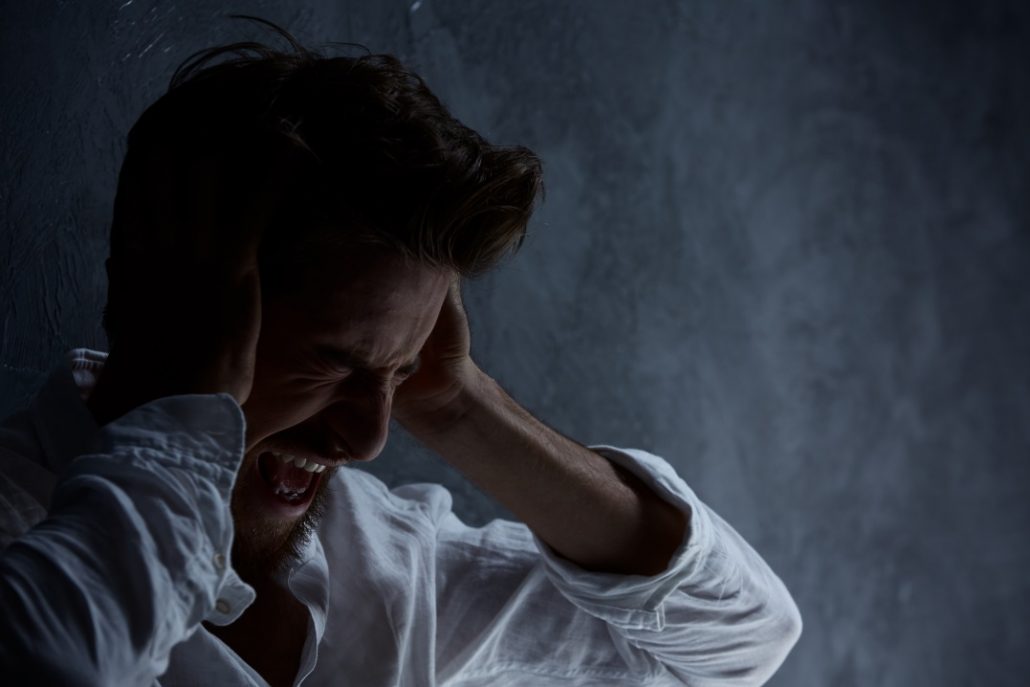
One disorder that commonly co-exists with a substance use disorder is schizophrenia. The American Journal of Psychiatry released a study that suggests approximately half of all people with schizophrenia also have a substance abuse disorder.
But one substance stands out the most when looking at people living with schizophrenia- marijuana.
The exact cause of schizophrenia is unknown, but many suspect a combination of environment, genetics and altered brain chemistry and structure to all play a part. So it is unclear why people with schizophrenia would abuse marijuana. Especially since this drug typically produces many of the same symptoms these people experience when in the midst of a schizophrenic episode. Some of these symptoms include:
- Short-term memory problems
- Delusions
- Unusual or dysfunctional ways of thinking
- Difficulty beginning and sustaining activities
- Impaired executive functioning
While not all symptoms are the same for everyone, some of these more common symptoms definitely overlap between the two. While it may not be obvious why, research suggests it is pretty obvious that marijuana is most popular for people with schizophrenia.
-
Alcoholism and Anti-Social Personality Disorder
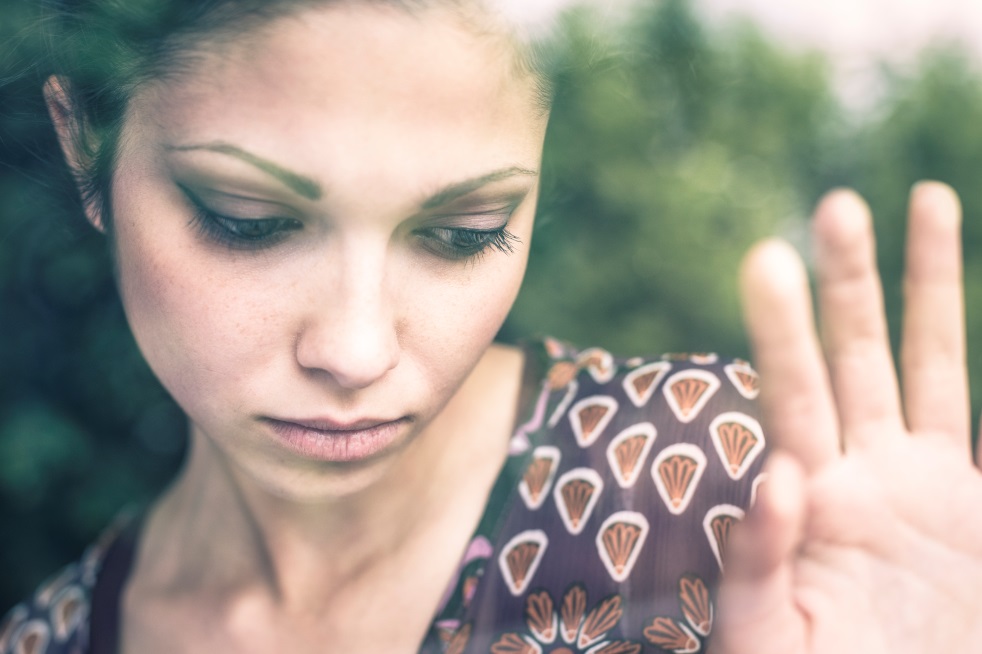
You might be surprised with this one because most people assume alcohol is most commonly matched with depression.
Anti-social personality disorder is easier to understand when one explains the concept of personality disorders in general.
To put it simply, a personality disorder is an enduring pattern of personal experience and behavior that deviates noticeably from the expectations of the individual’s culture, which leads to personal distress of impairment. So antisocial personality disorder (ASPD) is characterized by a tendency to disregard and even violate the rights of others. Symptoms can vary from egregious to outright dangerous. They include:
- Irritability
- Aggressiveness
- Lack of remorse
- Consistent irresponsibility
- Recklessness
- Impulsivity
- Deceitfulness
- Lack of stability in a job and home life
- Disregard for society and laws
- Violation of the physical or emotional rights of others
Often the more intense cases earn the titles of sociopathic or psychopathic.
Alcohol abuse very frequency co-occurs with other mental health disorders. However, according to the National Institute on Alcohol Abuse and Alcoholism (NIAAA), the disorder with the closest connection to alcoholism is anti-social personality disorder.
In fact, people who drink to excess on a regular basis are 21 times more likely to deal with ASPD when compared to people who don’t have alcoholism.
The NIAAA also states that both of these disorders typically develop early in life. However, alcoholism can actually make the underlying mental illness worse. Intoxication can lower an individual’s inhibitions, which makes their antisocial behaviors more prevalent. This may also lead to more dangerous manifestations of the disorder.
-
Anxiety Disorders and Cocaine Addiction
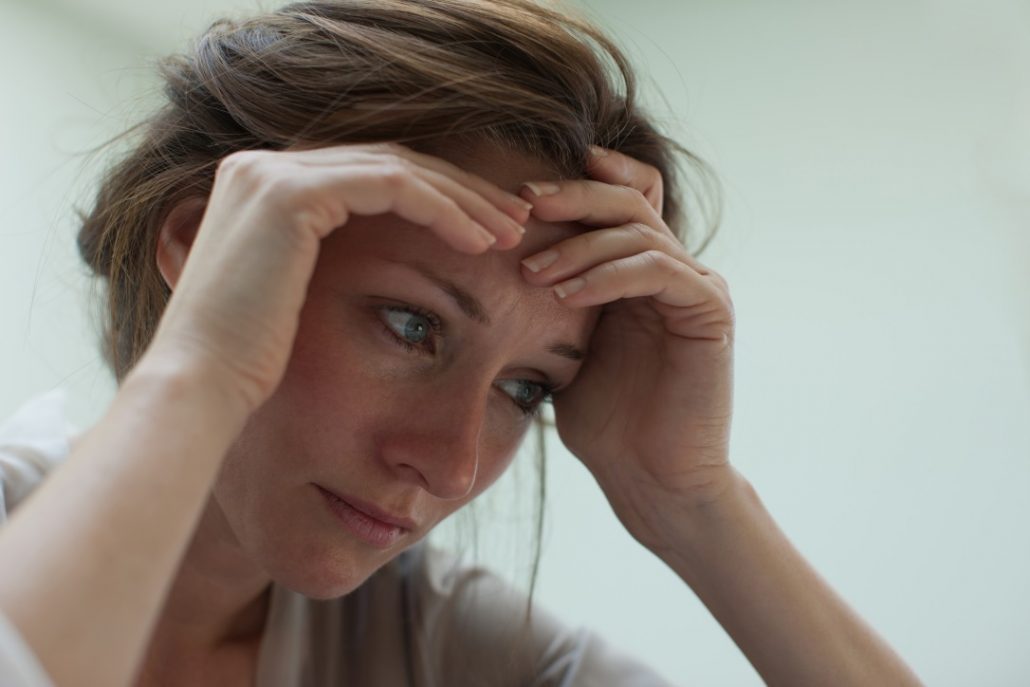
Cocaine is an extremely powerful narcotic stimulant, which gives users feelings of intense euphoria. However, the tradeoff is a very steep price to pay considering how dangerous this drug really is. Continued cocaine use typically leads to symptoms that essentially mirror an anxiety disorder, including:
- Restlessness
- Hallucinations
- Paranoia
- Insomnia
- Difficulty concentrating
- Aggression
Because cocaine is a stimulant, it speeds up and amplifies activity of the brain’s neurotransmitters. Certain neurotransmitters at higher levels induce anxiety. So anxiety is actually a symptom of cocaine use already. Cocaine use also has the potential to create psychotic episodes. Some people even experience severe mental symptoms as a result of use.
As a long-term effect of cocaine use, brain circuits are more sensitive while struggling to respond to natural stimuli, and the results are often related to mood and mental health. Statistics show that there is a very high risk of anxiety and cocaine abuse occurring together. Then if you already have an anxiety disorder, the risk becomes even higher that you will develop a severe emotional problem when using a drug like cocaine.
While the adverse effects of cocaine use can eventually fade for those able to achieve a long-lasting sobriety, sometimes the damage lingers. Those unusual thoughts and behaviors can continue even long after someone has given up the drug.
-
Prescription Opioid Addiction and PTSD
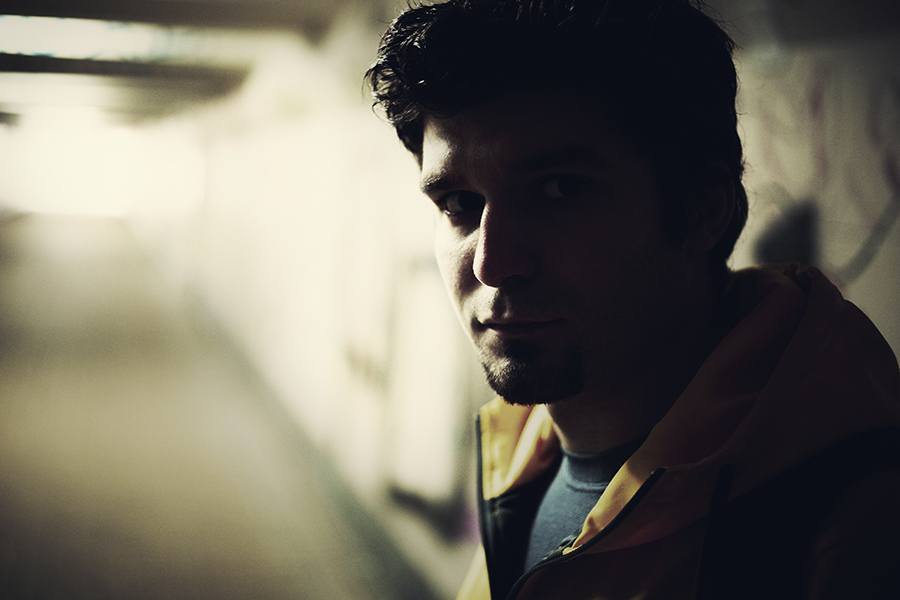
Post-traumatic stress disorder (PTSD) is a mental illness that takes hold in the aftermath of an intense and traumatic experience. Often, people who survive tragedies, war and other dangerous or life-altering events will experience PTSD.
In some circumstances, people will leave their experience with serious physical injuries, and often, those injuries are treated with prescription painkillers. This is just one way that prescription opioids have contributed to a huge epidemic that has been hurting America for the past several years.
Prescription opioids often boost feelings of pleasure and calm inside the brain, and sometimes people who have PTSD end up abusing these medications in order to experience euphoria and numb themselves to not just their physical agony, but also their emotional trauma. This can become an endless cycle of self-medicating. This is especially true with veterans. In fact, some research indicates that veterans with pain and PTSD are 3 times more likely to receive opioids compared to those without any mental health disorders.
It is true that having effective pain medications is very important to improve the quality of life for those with physical pain, especially chronic pain patients. However, mixing powerful opioids like prescription painkillers with PTSD can lead to tragic outcomes. With increasing rates of veteran suicides over the past several years, one can only image what impact the surging opioid crisis may have had on those struggling with PTSD.
-
Depression with Heroin Addiction
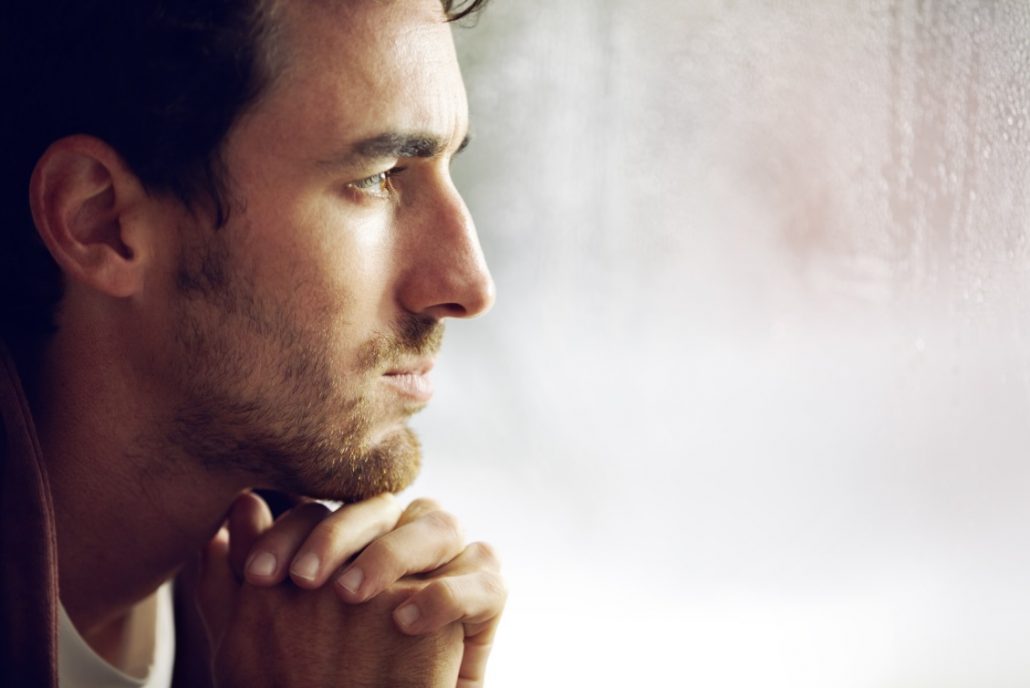
Throughout one of the worst drug epidemics in American history, heroin has been a driving force behind countless overdoses and skyrocketing death rates. Heroin isn’t just devastating physically, but also mentally and emotionally crippling. The connection between these adverse effects and depressive disorders is remarkable.
The allure of heroin is that is can make users feel an overwhelming sense of pleasure for a short time. However, long-time use of heroin can burn out the portions of the brain responsible for producing natural signals of pleasure, leaving them incapable of feeling good on their own without the drug. The drug alters brain chemistry and creates mood changes.
Advances in Psychiatric Treatment estimates that 48% of opioid users have experienced depression at some point in their lives.
Extended use of heroin can eventually cause a form of brain damage that leads to depression. Users can become physically incapable of feeling happiness unless the drug is present. Withdrawal symptoms from heroin can also exacerbate symptoms of depression. Many of them are actually overlapping symptoms, such as:
- Restlessness
- Irritability
- Slow thinking, speaking or body movements
- Loss of interests
- Sleep problems
- Physical pains
- Headaches
- Changes in appetite
The combination of depression and heroin addiction is incredibly common. Sometimes it can be difficult for people to tell which issue came first, but ultimately they can both be exceedingly debilitating, or even deadly.
Dual Diagnosis Treatment
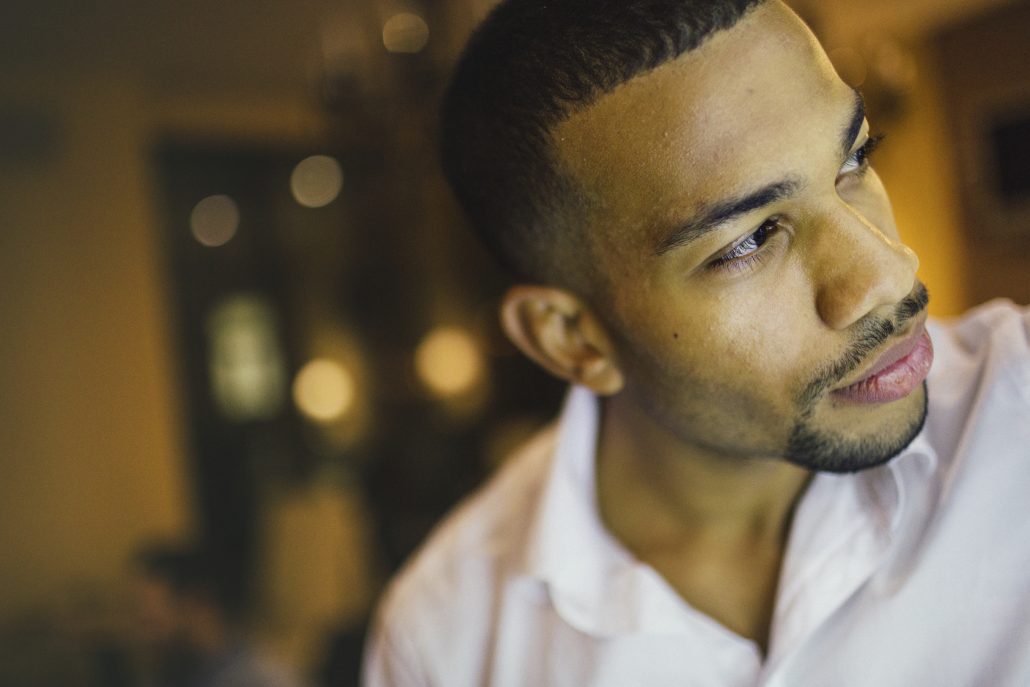
Dual diagnosis means that a person is dealing with two medical conditions that are co-occurring. In regards to the field of drug addiction, dual diagnosis specifically means that someone is struggling with both substance use disorder and another mental or behavioral health issue. Sometimes it is because prolonged drug use has contributed to developing a mental health issue, while other times it is because someone has tried to self-medicate when facing a mental health issue.
Dual diagnosis treatment is so important because it provides the opportunity to treat both co-occurring disorders simultaneously. For those suffering with more than one disorder, it is not nearly as effective to focus on treating one while ignoring the other. Holistic healing is all about addressing every aspect of each individual to help them find success in every part of their life.
Palm Healthcare Company believes in providing holistic addiction resources to help treat not just the addiction, but also any other issue that could be holding you back from achieving a full life of lasting recovery. If you or someone you love is struggling, please call toll-free now.
CALL NOW 1-888-922-5398
by Justin Mckibben | Feb 16, 2018 | Mental Health, Mental Health Stigma, News, Post-traumatic Stress Disorder, Stigma, Violence
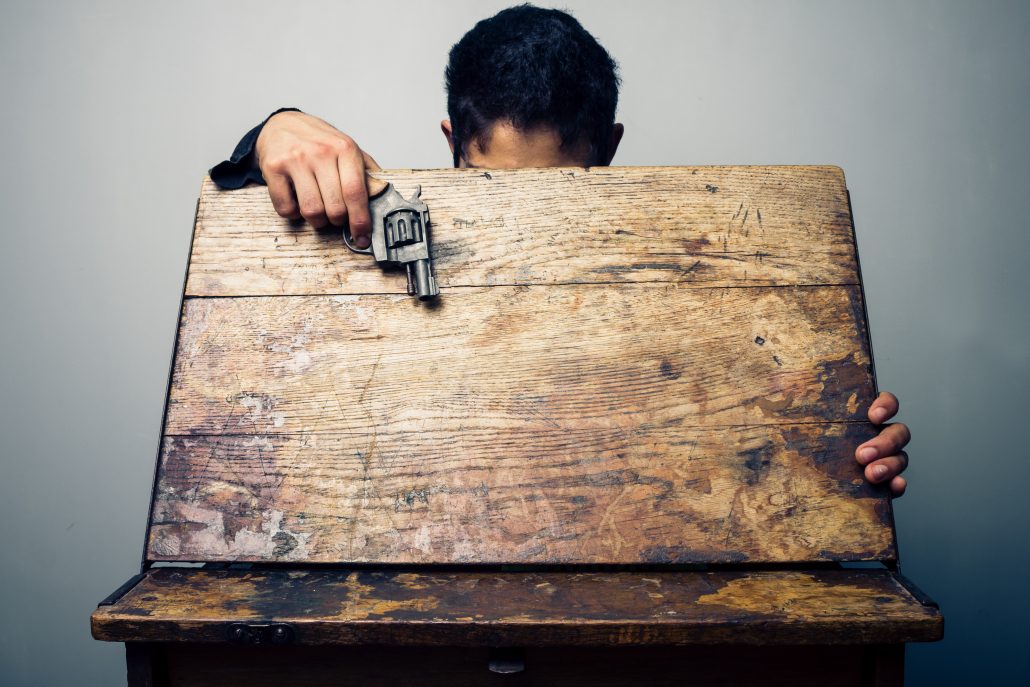
Only days after the horrific South Florida school shooting at Marjory Stoneman Douglas High School, we must take a hard look at the mental health debate, and why mental health should always have been a priority.
It seems like just yesterday I wrote about last year’s tragic mass shooting in Las Vegas and emphasizing how critical it is that mental health support and awareness be a serious and key focus of this conversation. The school where this tragedy took place is a mere 37 miles from where I sit and write this today. I lived within a 20-minute drive of the building for over 3 years. Now, with only a month and 15 days into 2018, we already up to 19 similar acts of terrible violence.
On Wednesday, February 14, Nikolas Cruz entered the high school in Parkland, Florida with an AR-15 rifle and took the lives of 17 people, wounding over a dozen others. This is America’s deadliest school attack in 5 years, perpetrated by a lone 19-year-old gunman with a reputation for disturbing behavior.
Yesterday, President Donald Trump included in his statement about the South Florida school shooting that there were “so many signs” the suspected shooter was “mentally disturbed.” But should mental health be our own focus?
It is extremely difficult to find answers to this complex problem. So what action should we take to change?
The Mental Chaos of Nikolas Cruz
Authorities have confirmed that Cruz was previously expelled from Marjory Stoneman Douglas High School for disciplinary issues. Reports from the school indicate Cruz as a potential threat who demonstrated a fixation on guns. This obsession can be seen on full display through the photos suggested to be pulled from Cruz’s social media accounts.
Reports said that teachers, classmates and even strangers were concerned about Cruz. One teacher apparently reported that administrators sent an email last year saying that Cruz was not allowed to carry a backpack on campus. Cruz’s adoptive father died a few years ago, and his adoptive mother, who was one of the only people the teen was ever close with, died around Thanksgiving. The orphaned 19-year-old had been living at a friend’s house, with some suggesting he was showing signs of depression. Some former friends have even said they cut ties with him after saying he liked to shoot animals. Classmates claim he used to sell knives out of a lunchbox in the school and even threatened students with violence.
Cruz had been suspended more than once before being expelled, for fighting and having bullets found in his backpack. While he had no criminal history prior to this appalling act of violence, he lived a troubling and chaotic life.
What was being done?
Failing to Catch Red Flags
While it is unfair to say there were no actions taken, those actions failed to put a stop to this tragedy. The Washington Post reports that Cruz had been getting treatment at a mental health clinic, but had stopped after less than a year. Some are insisting that not enough was done to try and address the many obvious issues shown in Cruz’s past. Howard Finkelstein, the chief public defender in Broward County, states,
“Every red flag was there and nobody did anything. When we let one of our children fall off grid, when they are screaming for help in every way, do we have the right to kill them when we could have stopped it?”
Even the FBI admits to receiving a warning about this individual and failing to act. With so many indications that Cruz was a threatening, violent and unstable individual it is deeply troubling that not only did he slip through the cracks of any efforts to curb mental health-related issues, but he was able to obtain a variety of weapons. Despite the many red flags, Cruz’s background wouldn’t disqualify him from purchasing the rifle he used in the shooting.
The Mental Health VS Gun Rights Debate
The biggest debate we see after each one of these terrible atrocities is that familiar blame game; Is it a ‘guns’ issue or a ‘mental health’ issue? Without picking a side, I’ll try to acknowledge a lot of the concerns. For example, there is an enormous amount of data showing that the rates of mental health disorders in the last few decades has increased at astonishing rates. Every year the mental health of our nation is dwindling. So is this the answer to the riddle? Some seem to think so. Others- not so much.
The current federal law already denies the sale of firearms to anyone who is considered “adjudicated as a mental defective” by a lawful authority or involuntarily committed to a mental institution. It also allows for states to create stricter restrictions. Some states have taken advantage of this and enacted legal channels for stripping firearms away from gun owners flagged as potential threats. However, some do not think this is enough. Others have even gone as far as directly linking mental health to gun rights.
- In Hawaii, a person diagnosed with a mental disorder may not own a gun without clearance from a doctor.
- California firearm owners can be disqualified from gun possession for five years if involuntarily confined to psychiatric care for 72 hours and deemed by medical professionals to be dangerous to themselves or others.
However, legal experts also warn that it isn’t as simple as identifying people with mental disorders. According to Fredrick Vars, a law professor at the University of Alabama,
“By and large, the people who engage in these horrific events don’t have obvious major psychiatric issues,”
Dr. Rozel, an associate professor of psychiatry at the University of Pittsburgh. He states that these broad restrictions based on a psychiatric diagnosis risk depriving hundreds of thousands of law-abiding people of their gun rights. Rozel goes on to say,
“Fundamentally, that’s the problem with focusing on the mental-health issue.”
According to a study by the U.S. Secret Service and Department of Education in 2004, conducted after the attack at Columbine High School, surveyed “targeted school violence”:
- Only 1/3 of perpetrators had ever received a mental-health evaluation
- Fewer than 20% of that 1/3 had been diagnosed with mental health or behavior disorder before the attack
The President of the American Psychological Association (APA) Jessica Henderson Daniel does not agree with automatically assigning the label of mental illness to school shooters. She and other experts believe such rhetoric oversimplifies the complex problem of mass violence while also stereotyping those who struggle with mental health disorders.
“Framing the conversation about gun violence in the context of mental illness does a disservice both to the victims of violence and unfairly stigmatizes the many others with mental illness.”
A senior policy adviser for the National Alliance on Mental Illness said in an interview that invoking mental illness in the gun-control debate is often more political than helpful to those who actually struggle with mental health issues. Many see it as a means to draw attention away from any discussion on gun control. So is it really that far-fetched to even consider an honest and thorough examination of how we might improve policies surrounding access to guns?
After all, American has more mass shootings than any other developed nation, and not even by a little. Studies indicate that the rate at which public mass shootings occur tripled since 2011.
From 1982 up to 2011, a mass shooting occurred roughly once every 200 days.
Then, between 2011 and 2014 that rate has accelerated to at least one mass shooting every 64 days in the United States.
Realistically, it is fair to question the idea that this is simply a mental health issue. It may be a piece of the problem. Yet there is so much more that needs to be addressed in order to work toward a future without this kind of senseless violence.
What Can Be Done For Mental Health?
The sad thing is, we should never have waited for any acts of violence to make mental health a priority. A wide spectrum of issues, including depression, anxiety, and substance use disorder are all very serious and very damaging conditions. Countless Americans still struggle and don’t even know it, or don’t have access to care.
Many argue that the way lawmakers are changing healthcare is making it harder for people to receive mental health services. So with all that has happened, will mental health truly become the priority everyone says it will be? Thursday President Trump promised to “tackle the difficult issue of mental health” while speaking in regards to this tragic incident. But how will these words be followed by action? The president’s current budget actually includes massive cuts to mental health resources, so will these resources be given new priority?
For trauma survivors, there is a whole other element to providing mental health support resources. Horrific incidents like this recent shooting create shockwaves throughout the community and impact the mental health of innumerable others. Students, families and friends, teachers and other officials like law enforcement are all exposed to a new level of unimaginable pain and suffering. We must also make their mental health a priority. But we need to stop waiting until something unspeakable happens before we worry about our nation’s mental health.
Our hearts break for all of our neighbors here in South Florida who are suffering. No matter what we do, be it changing our mental health care or any other policies concerning guns, we MUST DO BETTER!
If you or someone you love is struggling with trauma, depression, or any mental health disorder please seek help. If you struggle with substance use disorder, drugs or alcohol is not the answer. There is real help out there. Please call toll-free now.
CALL NOW 1-888-922-5398












